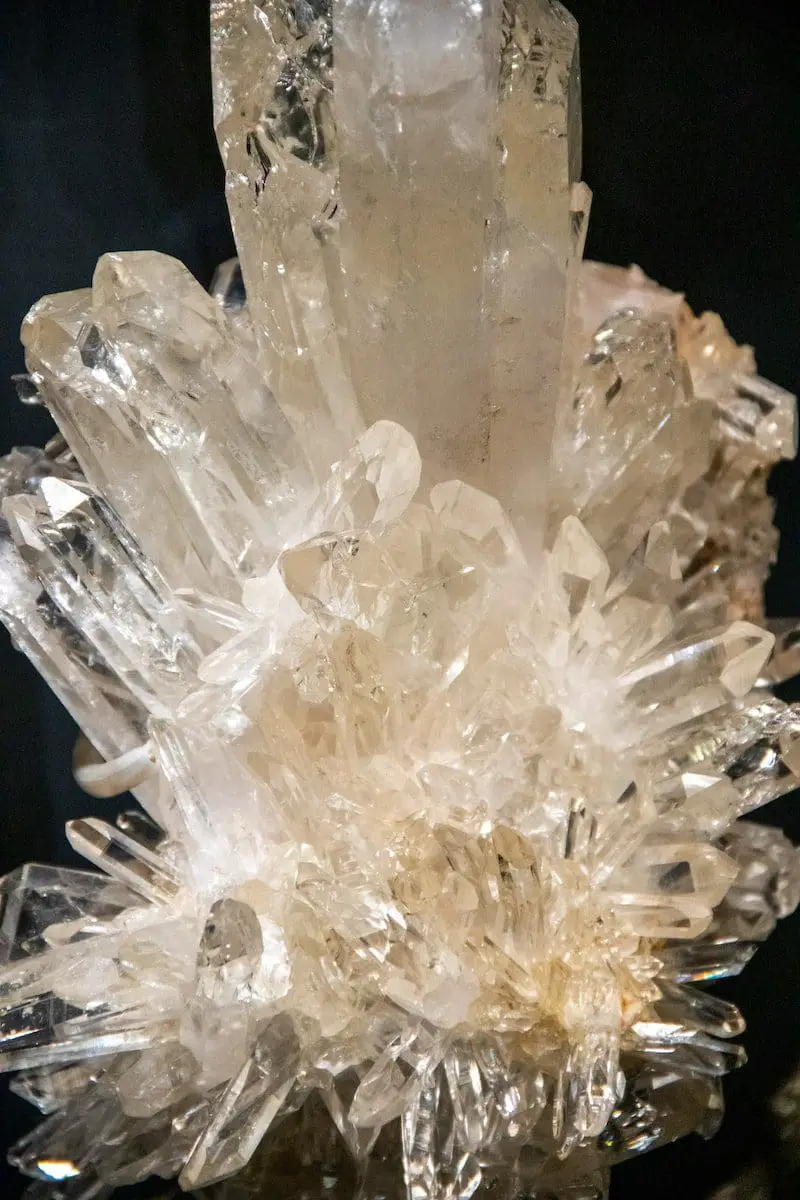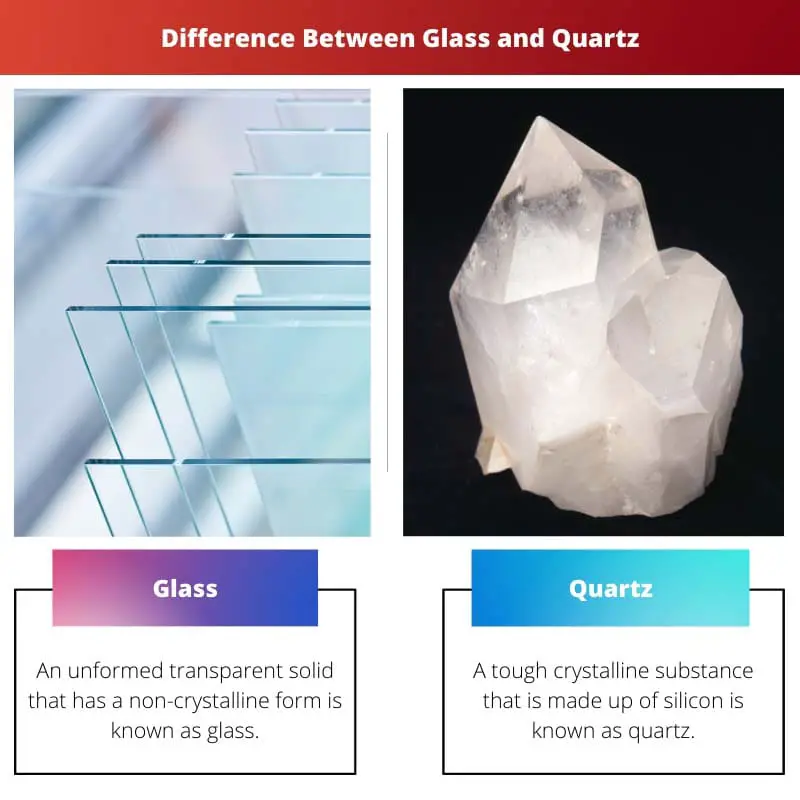Several natural elements exist around us that we humans use for various purposes in our daily lives and even in other fields. Sometimes these natural elements are combined to form a new product.
These products have other applications than the natural element from which it is made.
For instance, iron is a naturally occurring element that is found on earth, and when it is combined with another element like carbon, an alloy is formed called steel which has its independent applications and properties. Similar to that, there are two other substances, namely 1. Glass, and 2. Quartz.
Key Takeaways
- Glass is an amorphous solid made by melting a mixture of silica, soda, and lime, while quartz is a crystalline solid made of silicon dioxide.
- Glass is transparent, while quartz is translucent or opaque.
- Glass is more fragile than quartz, which is harder and more durable.
Glass vs Quartz
The difference between glass and quartz is the amount of silicon dioxide content present in the respective substances. The amount of silicon dioxide content present in glass is approximately around eighty per cent. On the other hand, the amount of silicon dioxide content present in quartz is approximately ninety per cent.

An unformed transparent solid that has a non-crystalline form is known as glass. Glass is used in various fields in many ways.
It is used for decoration and making several products used for decoration purposes in many households. Other than that, it is also used for making utensils like plates, beakers, cups etc.
A tough crystalline substance that is made up of silicon is known as quartz. It falls in the category of silicate minerals.
It exists in two forms. The first form is alpha quartz, and the other is beta quartz, seen at higher temperatures.
It is used to make imitation jewellery and carvings.
Comparison Table
| Parameters of Comparison | Glass | Quartz |
|---|---|---|
| Meaning/ Definition | An unformed transparent solid that has a non-crystalline form is known as glass. | A tough crystalline substance that is made up of silicon is known as quartz. |
| Silicon Dioxide Content | Less | More |
| Structure | Random molecular structure | Symmetrical molecular structure |
| Form | Non-crystalline | Crystalline |
| Electrical conduction | Insulator | Conductor |
What is Glass?
Glass is a type of substance that is transparent, non-crystalline and amorphous. It is made up of sand, soda ash and limestone.
It is widely used in many ways and fields. In the stone age, naturally occurring glass was found that was used for cutting several tools and making weapons. It was the obsidian glass.
When humans didn’t discover iron smelting before that, they used to opt for glass cutting. The Glass cutting technique has been in practice for the last 6000 years.
Beads that were the by-products of glass cutting and metalworking are considered the earliest glass products that were found. Until the 15th century BC, the glass that was found was impure and contained many flaws.
Glass is used in architecture and windows. The window panes that are fitted are made up of glass. It is also used to make various tableware.
Various drinking glasses are made up of glass. Other than that, the utensils, like plates, bowls, cups, saucers, serving bowls, lids, spoons, bottles, jars, jugs etc., are also made up of glass.
In various science laboratories, the apparatus that is used for performing various experiments is also made up of glass. Because of the advantages of glass apparatus like cost-effectiveness, availability in various shapes and sizes etc., it is convenient to use apparatus that is made up of glass.
Apparatus like beakers, measuring jars, test tubes, pipettes, flasks and thermometers are also made up of glass.

What is Quartz?
Quartz is a type of substance that is tough and made up of silicon, and it is crystalline in nature. The word “quartz” derivation is from the German word “Quarz”.
There are several types of quartz that are categorized based on different parameters. These different types of quartz have their independent properties and applications.
A naturalist from Rome believed that quartz is a form of water frozen for a long time, found near glaciers and cold regions. Several other properties of quartz were discovered later.
However, the piezoelectric properties of quartz were discovered in the year 1880. In the year 1923, the first quartz oscillator was created.
The purest form of quartz is white, and the other colours that are seen in quartz are because of the impurities that are present in it. Other than white, quartz is seen in colours like red, green, orange, pink, purple, black, brown, yellow, and grey.
In some rare cases, quartz is also found in the multi-coloured form.
There are several uses of quartz. Quartz is used to make jewellery, it can also generate electric potential because of its piezoelectric property, it is also used as a gemstone in jewellery making, it is also used in making clocks and watches, quartz has high melting points, and because of this useful property, it is used in making various laboratory apparatus as well.

Main Differences Between Glass and Quartz
- Glass is non-crystalline. On the other hand, quartz is crystalline.
- The silicon dioxide content in glass is less. On the other hand, the silicon dioxide content in quartz is more.
- The molecular structure of glass is random. On the other hand, the molecular structure of quartz is symmetrical.
- Glass is an insulator. On the other hand, quartz is a conductor.
- Glass can not withstand higher temperatures and pressures. On the other hand, quartz can withstand higher temperatures and pressures.




